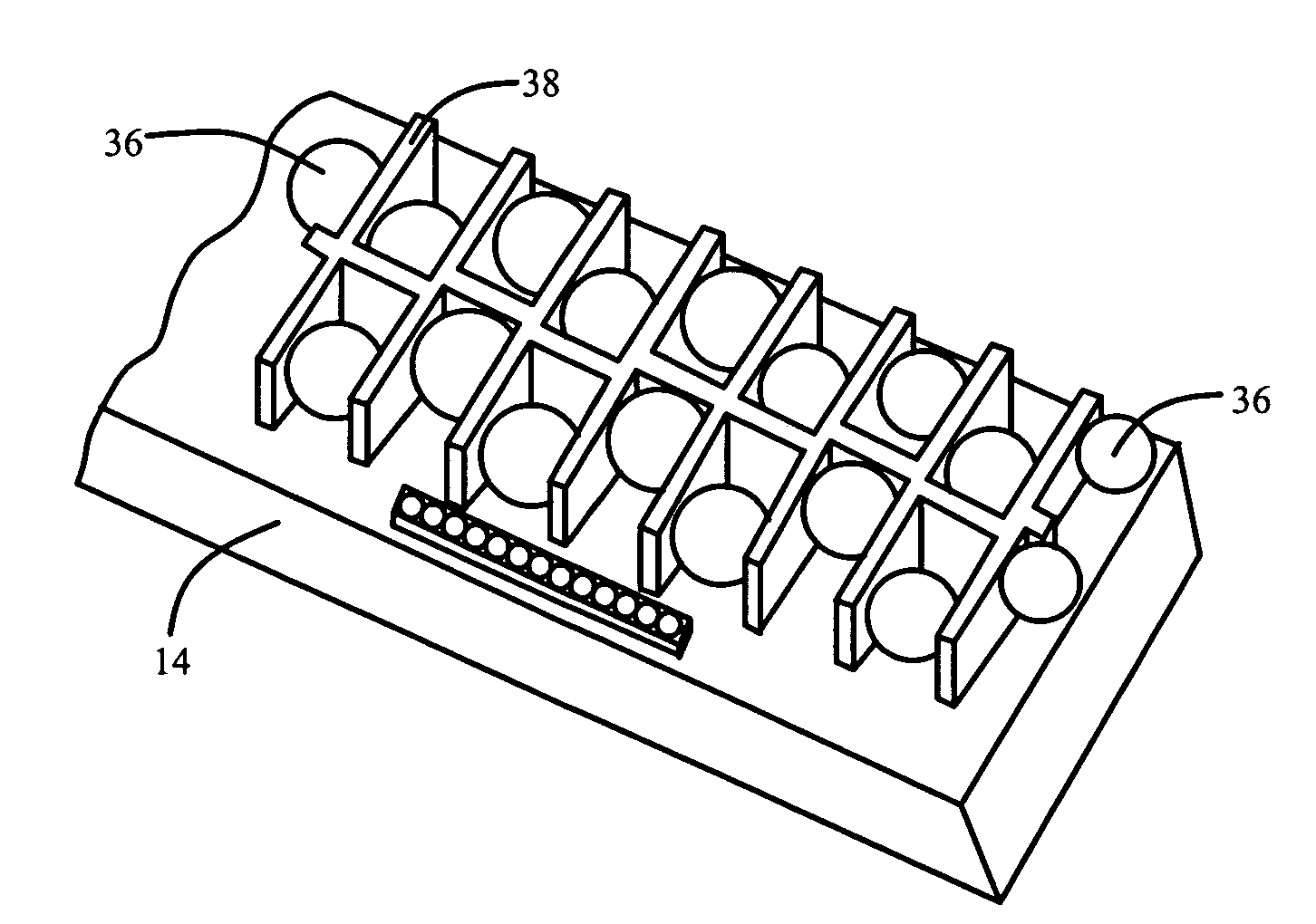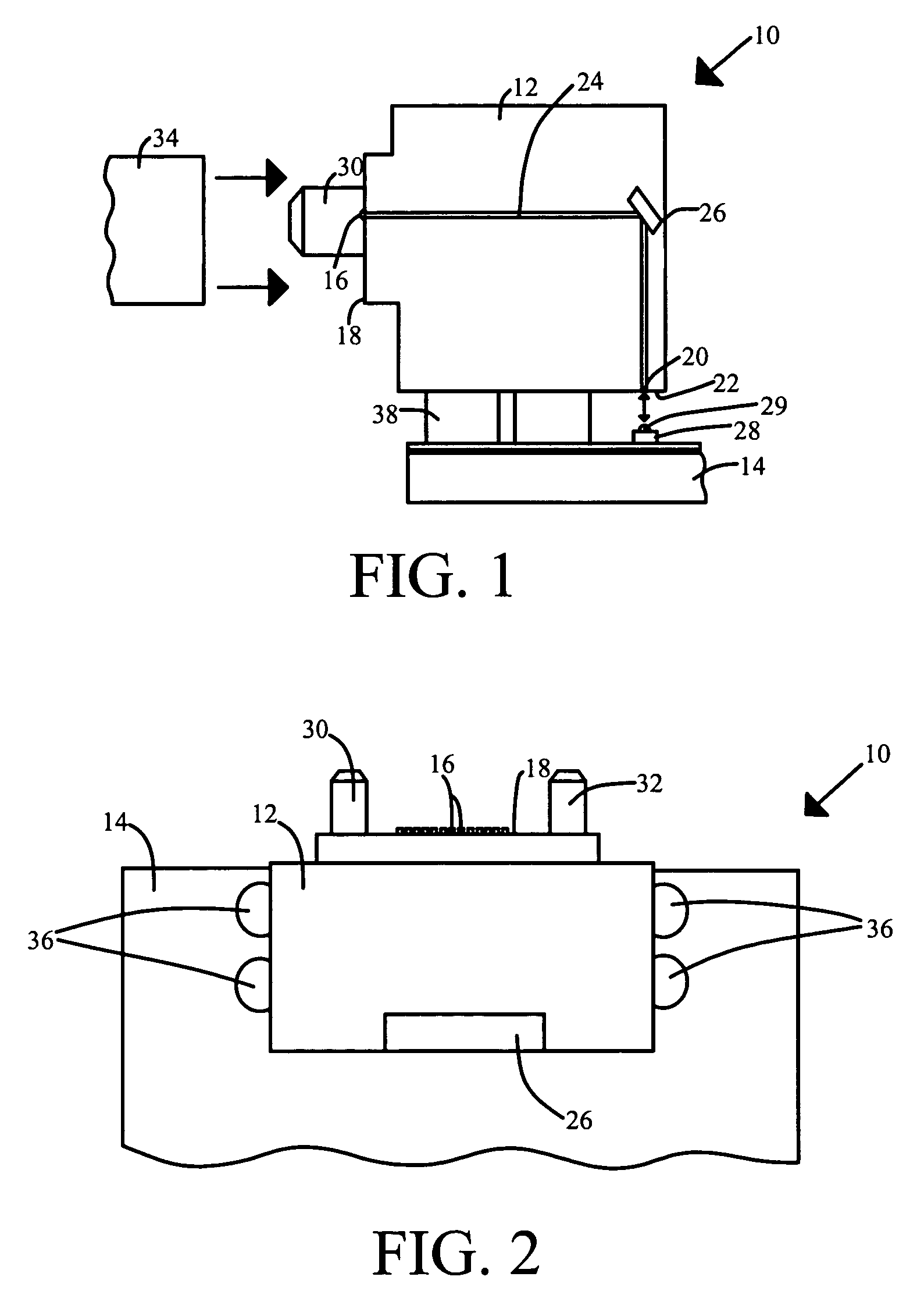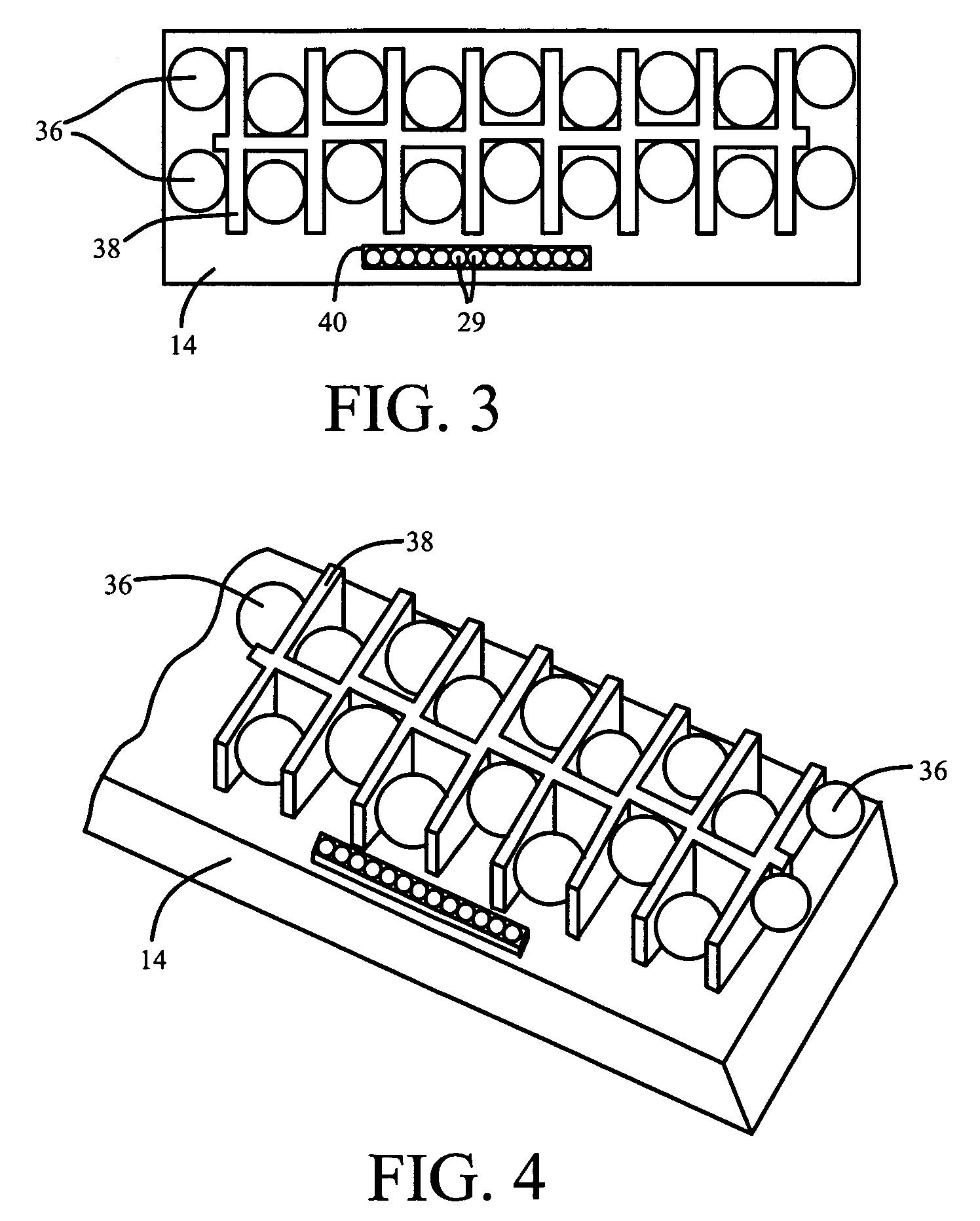Passive alignment using elastic averaging in optoelectronics applications
an optoelectronic and elastic averaging technology, applied in the field of optoelectronic applications, can solve the problems of increasing the cost of inherent parts, increasing the cost of capital equipment, and slow process, etc., and achieves the effect of accurate positioning of surface features, low cost and repeatability
- Summary
- Abstract
- Description
- Claims
- Application Information
AI Technical Summary
Benefits of technology
Problems solved by technology
Method used
Image
Examples
second embodiment
[0032]FIG. 5 is a schematic view of an elastic averaging alignment arrangement that uses both fixed alignment features and flexible alignment features. In this embodiment, the compliance is provided by standoffs 42, 44 and 46 that support solder bumps 48, 50 and 52 above the surface of the substrate 14. The standoffs may be made of polyimide or a similar material having compliancy. The fixed alignment features are downwardly depending regions 54, 56, 58 and 60 of the coupler block 12. In linking the coupler block to the substrate, the spaces between the downwardly depending regions are aligned with the solder bumps. Because the solder bumps are supported by compliant columns (standoffs), the inexactness of positional tolerances in fabricating the coupler block and the standoffs will not prevent seating of the coupler block. By providing sufficient overconstraint, the composite error is well within acceptable limits. Preferably, there are at least twenty standoffs.
third embodiment
[0033]FIG. 6 is a representation of the invention. Within the substrate 14, openings 62, 64, 66 and 68 are formed in positions to receive compliant protrusions 70, 72, 74 and 76 extending from the coupler block 12. This embodiment is less suited for applications in which the substrate is a printed circuit board, since typical hole tolerances for printed circuit boards are too inexact for all but the least demanding alignments. However, the application is well suited for use with flex substrates, ceramic substrates, and particularly semiconductor substrates. When the compliant protrusions are inserted into the substrate openings, the beam ports along a surface of the coupler block are properly aligned with the lenses / active optical elements of the device 40. Alternatively, the compliant protrusions may be formed along the substrate 14, while the openings are formed within the coupler block 12.
[0034]The uses of semiconductor substrates lend themselves particularly well to elastic aver...
PUM
 Login to View More
Login to View More Abstract
Description
Claims
Application Information
 Login to View More
Login to View More - R&D
- Intellectual Property
- Life Sciences
- Materials
- Tech Scout
- Unparalleled Data Quality
- Higher Quality Content
- 60% Fewer Hallucinations
Browse by: Latest US Patents, China's latest patents, Technical Efficacy Thesaurus, Application Domain, Technology Topic, Popular Technical Reports.
© 2025 PatSnap. All rights reserved.Legal|Privacy policy|Modern Slavery Act Transparency Statement|Sitemap|About US| Contact US: help@patsnap.com



